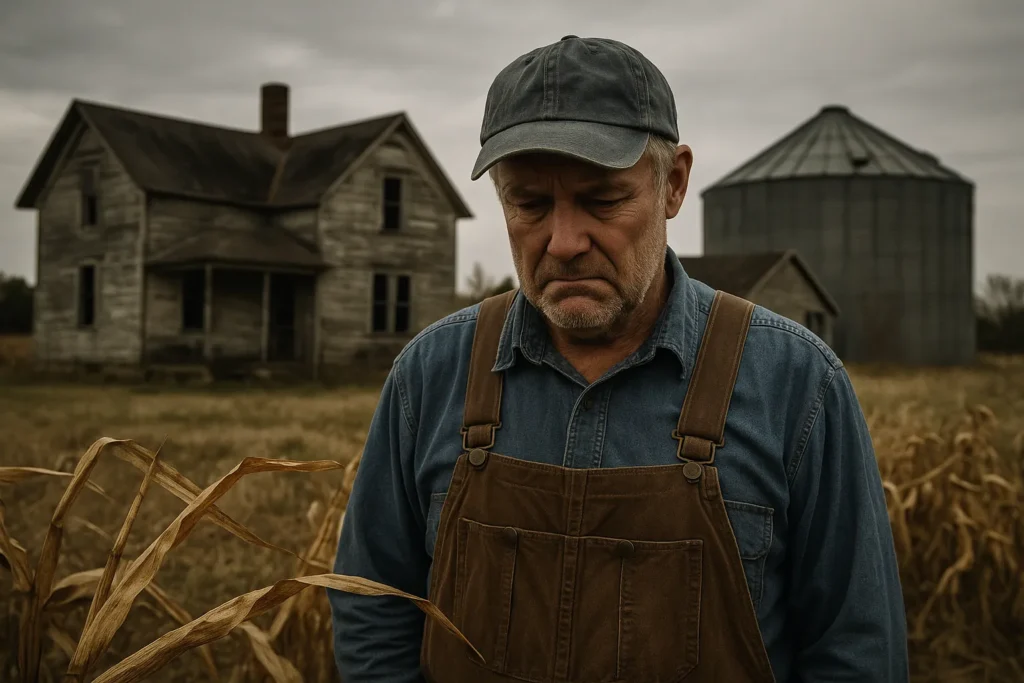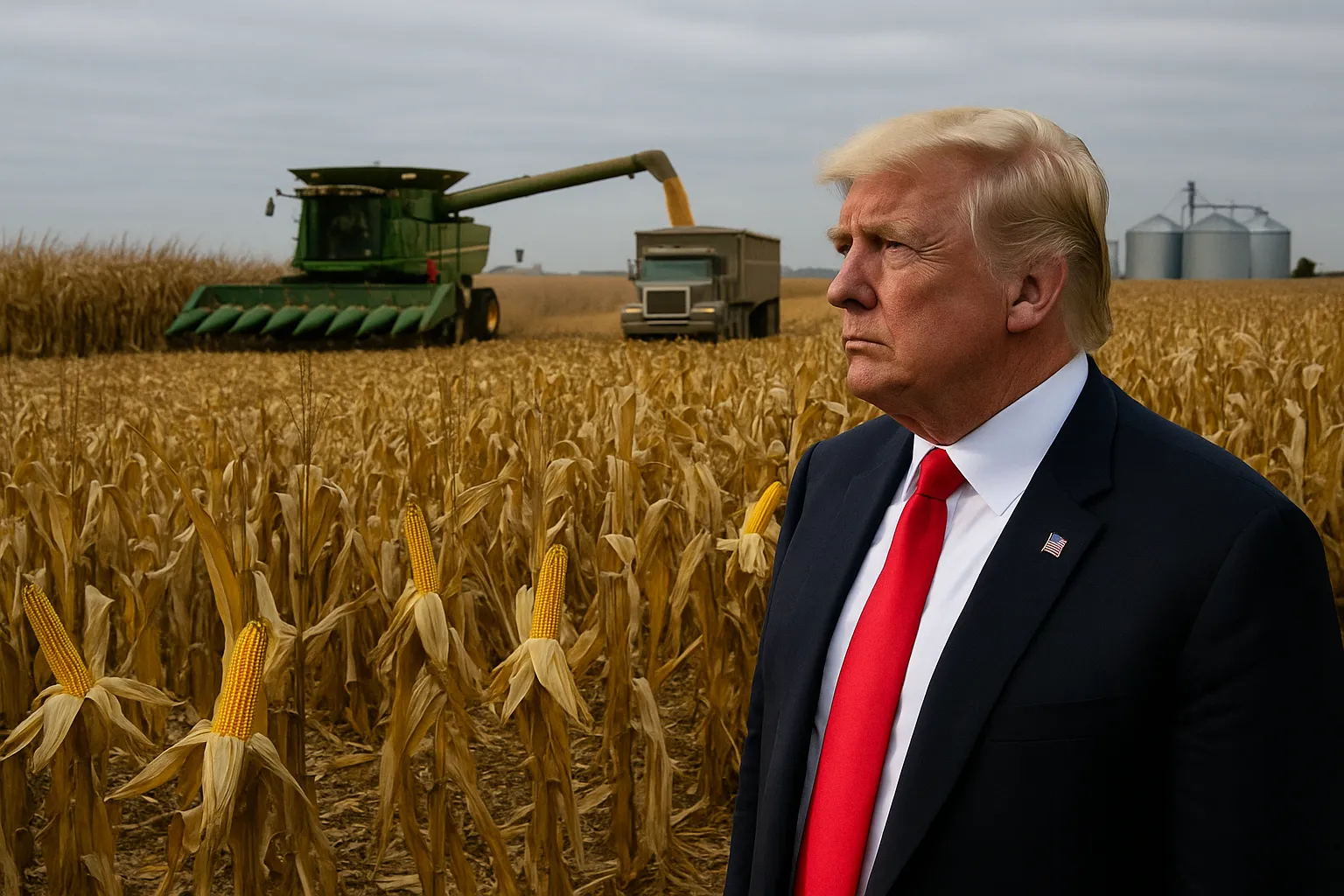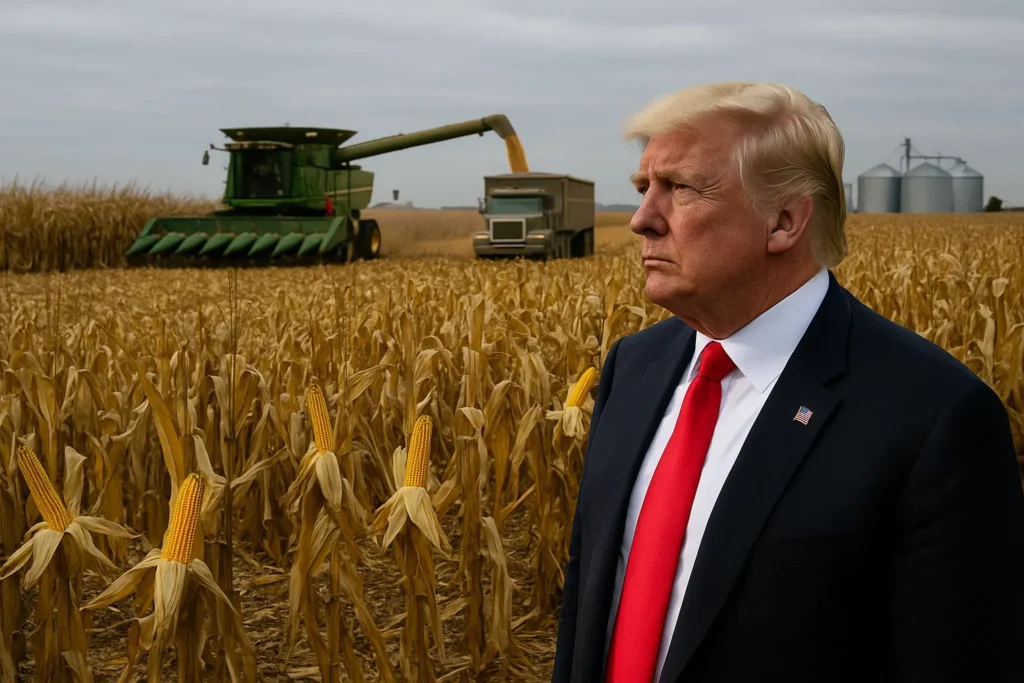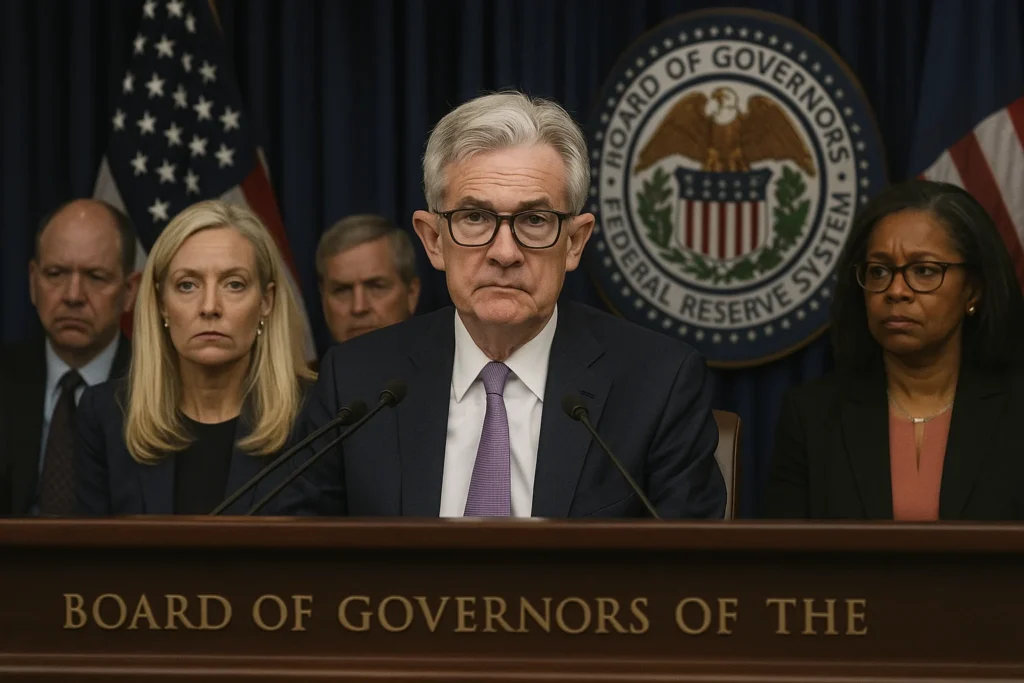The Trump farm economy was meant to be the comeback story of rural America — a revival of forgotten heartlands and hardworking families. Fields of corn stretch endlessly across the Midwest, combines harvest through golden dust, and silos overflow with grain. On television, it looks like triumph. Politicians call it a record harvest. The numbers dazzle. Yet, beneath the surface of this abundance, something is breaking. Farmers are producing more than ever, but they are earning less than they did a decade ago. Debt rises, optimism fades, and Trump’s promise to “make rural America great again” is being buried under mountains of unpaid bills.
This is the hidden face of the Trump farm economy — a paradox of plenty, where record output coexists with record insolvency. The same fields that once symbolized national strength now reflect political failure, corporate greed, and the despair of a generation left behind by policies that claimed to save them.
The illusion of abundance in the Trump farm economy
From the beginning, Donald Trump’s message was simple: protect American farmers, cut red tape, punish unfair trade, and bring jobs back to the heartland. His slogans painted the Midwest as the beating heart of American greatness. Deregulation, tariffs, and patriotism would supposedly rescue small farms from decay. But in 2025, the reality looks brutal. The Trump farm economy is producing a record corn harvest — not because farmers are thriving, but because they are desperate.
Faced with rising costs and shrinking markets, they plant more to survive. Each year, they borrow heavily to finance seeds, fertilizer, and machinery, praying that one bumper crop will cover their loans. Yet the global markets they depend on have been shattered by Trump’s trade wars. China, once the biggest importer of U.S. corn and soybeans, turned elsewhere. European buyers followed. The result is overproduction with nowhere to sell.
In this version of success, farmers drown in their own abundance. Prices collapse, silos overflow, and the illusion of prosperity becomes a cruel joke. It’s the agricultural equivalent of printing money — high volume, zero value.

Debt dressed as prosperity
Behind every shiny tractor and waving flag lies a spreadsheet soaked in red. The U.S. Department of Agriculture estimates that total farm debt now exceeds $550 billion — the highest in modern history. Interest payments eat away at profits faster than crops can grow. The Trump farm economy has turned small producers into full-time borrowers.
Trump’s administration proudly points to “farm income stability,” but that figure is distorted by subsidies and relief checks. Federal payments now make up nearly 40 percent of total farm income, the largest share since the Great Depression. These aren’t signs of recovery — they’re evidence of a patient on life support.
Moreover, Trump’s aid was never neutral. Billions in “trade relief” and “disaster support” flowed disproportionately to large agribusinesses in politically loyal states. Family farms got crumbs; corporate producers cashed in. Even the supposed ethanol boom, meant to boost demand for corn, fizzled as oversupply crashed fuel prices.
The numbers reveal the truth: under the Trump farm economy, productivity rose, but power consolidated. The small farmer’s independence — once a sacred symbol of America — became collateral in a populist illusion.
When loyalty becomes loss
The tragedy runs deeper than economics. Many farmers still cling to Trump as a cultural identity. To them, abandoning him would feel like betraying their community. Rural America has been conditioned to see the world as “us versus them” — the heartland versus the coasts, the honest worker versus the global elite. Trump exploited that narrative masterfully.
Even as debts pile up, barns close, and families lose their land, loyalty remains unbroken. In small towns across Iowa, Kansas, and Nebraska, “Farmers for Trump” banners still hang beside half-empty feed stores. Churches host prayer circles for “economic healing.” County fairs celebrate “resilience.” But the quiet truth is that resilience has turned into exhaustion.
The Trump farm economy is not saving rural America; it’s draining it. For every televised success story, dozens of families disappear from the map. Rural schools merge, hospitals close, and main streets go dark. The young don’t return after college. The population ages and shrinks. The countryside still waves the flag — but fewer hands are left to hold it.
The invisible winners
While small farmers drown, Wall Street floats. Agribusiness giants — Cargill, Archer Daniels Midland, Deere & Co. — post record profits. They hedge commodity prices, buy foreclosed land, and expand export operations abroad. The more the small producers fail, the cheaper the land becomes, and the easier it is for corporations to dominate the market.
The Trump farm economy was marketed as a revolt against global elites. In practice, it became their most efficient wealth transfer. Trump’s policies — from tax cuts to deregulation — empowered monopolies, not families. It’s capitalism without competition, a corporate feudalism wearing a populist mask.
The farmers who still praise Trump rarely see these numbers. They don’t read financial filings; they feel emotion, not data. Yet that emotion has been weaponized. Every speech about “American greatness” distracts from the quiet consolidation happening behind the scenes.
Political denial and managed decline
Washington calls this a “temporary correction.” Trump’s spokespeople insist that global markets will adjust, that subsidies are “support,” not dependency. But the same language was used during the 1980s farm crisis — and then, too, families lost everything. The pattern repeats: oversupply, price collapse, debt explosion, foreclosure, consolidation.
This is not a cycle; it’s a system. The Trump farm economy is a machine designed to produce political loyalty while extracting economic value. Bailouts buy silence, patriotism buys distraction, and record harvests provide the perfect photo backdrop for campaign speeches.
Even now, the administration plans another “support package” before the 2026 elections — another Band-Aid on a gangrene wound. These payments will temporarily ease pain but deepen dependence. Farmers will vote for the hand that feeds them, even as it tightens around their throat.
The human cost of the Trump farm economy
Statistics can’t capture despair. Suicide hotlines in agricultural states report rising calls. Financial stress destroys marriages, families, and communities. Pastors describe congregations “praying for rain and mercy.” County sheriffs talk about the rise in “economic suicides.” These aren’t isolated tragedies; they’re systemic consequences of neglect.
The psychological toll of debt is devastating. Many farmers still wake up before dawn, go to the fields, and work twelve hours — not for profit, but for dignity. The act of working becomes a form of resistance against irrelevance. Yet the outcome doesn’t change. Prices fall, banks demand payment, and the next season begins with less hope.
What the Trump farm economy has truly harvested is not corn — it’s fatigue.
Seeds of rebellion
Despite everything, resistance stirs in unexpected places. Younger farmers, disillusioned by politics, are experimenting with new models — cooperatives, direct-to-consumer markets, regenerative agriculture. They see no salvation in Washington. Instead, they seek community resilience outside federal dependence.
These innovators are not loud. They don’t make headlines. But they represent the possibility of a new rural identity — one not tied to Trump, subsidies, or corporate chains. They talk about sustainability, shared ownership, and independence from the debt machine. Their movement is still small, but it’s growing quietly, season after season.
If there’s a future beyond the Trump farm economy, it will come from them — not from politicians.
Lessons from a failing harvest
What makes this moment historic is not the record corn output, but the moral reckoning it demands. America can no longer pretend that abundance equals health. An economy that measures success in bushels and billions while its people drown in credit is an economy on the verge of collapse.
The Trump farm economy is both a mirror and a warning. It reflects what happens when spectacle replaces substance, when politics becomes theater, and when rural loyalty is mined like a natural resource. The fields may look golden, but they are fields of debt.
To restore the American heartland, the nation must abandon this mythology of endless growth. It must confront the hard truth that prosperity cannot be built on exploitation — not of labor, not of land, and not of faith.
Until then, the silos will stay full, the debts will rise, and the farmers who built America will keep harvesting someone else’s profit.
External Links:
18 views






